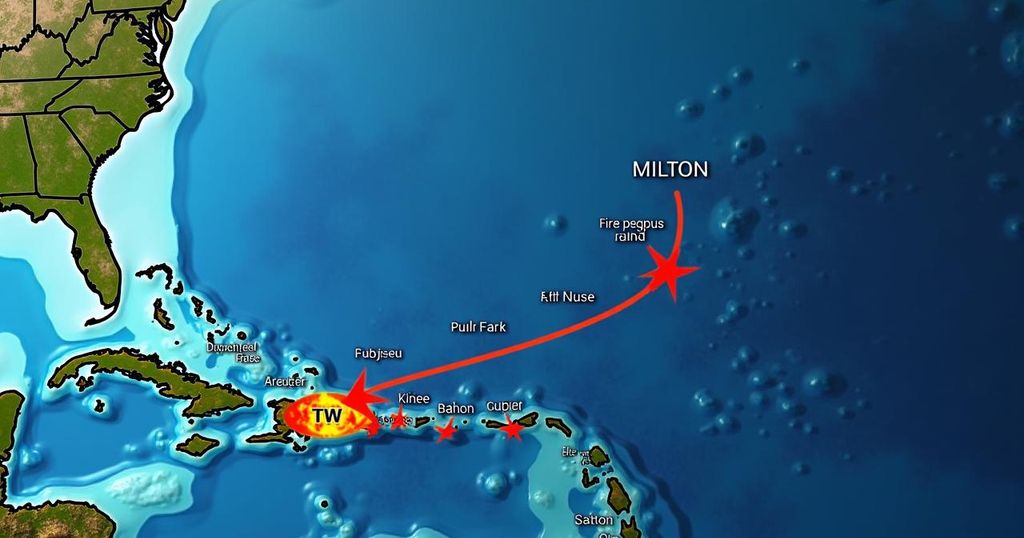Tropical Storm Milton Tracker: Projected Path and Impact Assessment
Tropical Storm Milton has formed in the Gulf of Mexico and is expected to affect Florida with strong winds and heavy rainfall by Wednesday. This is the 13th named storm of the season, following Hurricane Helene, which has been linked to numerous fatalities. Meteorologists classify storms based on wind speeds, and dangers such as storm surges and flooding accompany these weather events.
Tropical Storm Milton has emerged in the Gulf of Mexico and is anticipated to impact Florida with hurricane-strength winds and substantial rainfall by Wednesday, as reported by the National Hurricane Center on Saturday. Milton marks the 13th named storm of the current hurricane season. Historical patterns suggest that the effects of hurricanes and tropical storms can extend significantly north and south of the storm’s center upon landfall. If Tropical Storm Milton maintains its current course and escalates into a hurricane, it will represent the second major storm to strike Florida in a short span, following Hurricane Helene, which made landfall as a Category 4 storm just weeks prior, resulting in unprecedented storm surges and over 220 fatalities along its journey from Florida to Virginia. The formation and intensification of hurricanes depend on several factors. Meteorologists at the National Hurricane Center monitor the wind speed of these cyclones closely. A tropical cyclone qualifies as a tropical storm when its wind speed exceeds 39 mph for a minimum duration of one minute; it is then designated with a name. When wind speeds reach 74 mph, it is classified as a Category 1 hurricane, continuing up to Category 5 based on increasing wind speeds. These classifications are instrumental for officials in predicting potential hazards and damages, facilitating timely warnings regarding impending strong winds, high waves, heavy rainfall, and flooding upon landfall. It is imperative to understand the dangers associated with tropical storm-force winds, as hurricane-force winds can devastate structures and propel debris through the air. Additionally, winds can lead to significant storm surges, which indicate an abnormal rise in seawater levels and are cited as a leading cause of mortality during hurricanes in the United States, as noted by the National Weather Service. The havoc continues as the storm progress further inland, due to excessive rainfall often exceeding six inches, which can overwhelm local drainage systems, leading to flash floods with consequences that may linger for several days post-storm. The hurricane season typically peaks around mid-September, with this year’s season projected to be particularly severe. The National Oceanic and Atmospheric Administration forecasts between 17 to 25 tropical storms for the season, with an estimation of four to seven developing into major hurricanes.
This article provides insight into the current status of Tropical Storm Milton, detailing its projected path and potential impacts on Florida. It contextualizes the storm within the broader narrative of the hurricane season, discusses the formation and classification of hurricanes, and highlights previous storms to emphasize the severity of potential risks and damages. The article serves as both an informative update concerning Milton and a cautionary overview of the dangers associated with tropical storms and hurricanes, underscoring the importance of preparedness and awareness during hurricane season.
In conclusion, Tropical Storm Milton poses a significant threat to Florida, with the potential for hurricane-strength winds and heavy rainfall. The article emphasizes the importance of understanding the nature of tropical storms, the classification system utilized by meteorologists, and the risks associated with storm surges and flooding. As the hurricane season progresses and forecasts indicate a heightened risk of storms, preparedness remains essential for affected regions.
Original Source: www.washingtonpost.com




Post Comment